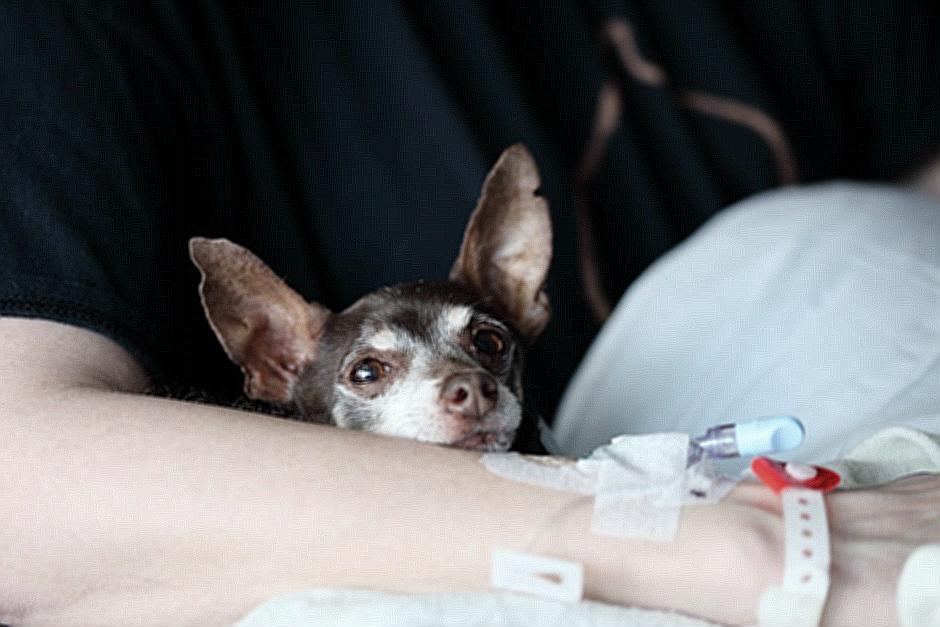Dog eye drops are a form of medication used to treat various eye conditions in dogs. These drops are formulated to help soothe, heal, and protect the eyes of our canine companions. Dogs are susceptible to eye problems just like humans, and eye drops play a crucial role in correcting these issues.
There are several types of dog eye drops available in the market, each with a different purpose. Some can prevent infections, while others can relieve symptoms like itching and irritation. Eye drops designed for dogs can also be used to treat allergies, conjunctivitis, dry eye, and cataracts among other conditions.
Dog eye drops are typically administered in the lower eyelid by tilting the dog’s head back slightly and applying the prescribed amount of medication. However, administering the drops may require some level of skill and patience, especially if the dog is uncooperative.
It is important to note that dog eye drops should only be used under the guidance of a veterinarian. The vet can recommend the appropriate drops and provide guidance on the proper dosage and frequency of use. Overusing or misusing dog eye drops can potentially cause harm or further damage to your dog’s eyes.
In conclusion, dog eye drops are a valuable tool in the treatment of eye conditions in dogs. They are an effective way to alleviate symptoms and promote healing. By working closely with your veterinarian, you can be confident in using the right eye drops and administering them properly to get the best possible results for your furry friend.
How Often Should I Use Dog Eye Drops?
The frequency of use of dog eye drops depends on the condition your dog is experiencing. In most cases, vets prescribe the frequency of administration for each medication on the labeling information sheet. However, it is essential to pay attention to your dog’s reaction to the medication and seek professional advice if you are unsure.
Some eye drops only require one dose, while others require more than one application daily. For instance, if your dog has dry eyes, your vet might recommend using eye drops three times a day to help improve their tear production. On the other hand, if your dog has a bacterial infection, your vet may prescribe antibiotic eye drops three to four times a day, depending on the severity of the infection.
How Do I Apply Dog Eye Drops?
Applying dog eye drops might seem like an overwhelming task, but with the right technique, it is pretty straightforward. Here are simple steps to follow:
Step 1: Clean the eyes – use a clean cloth or cotton ball to remove any discharge or debris around the eyes.
Step 2: Hold your dog – you need to get your dog into a comfortable position that allows you to access their eyes easily.
Step 3: Hold the eye drops – using the thumb and index finger, hold the eye dropper correctly.
Step 4: Pull the eye drop down – gently pull down your dog’s lower eyelid using your free hand.
Step 5: Instill the eye drop – carefully place one drop of the medication in the pouch formed by the lower lid. Do not allow the dropper to touch the eye or the lashes.
Step 6: Close the eye – give your dog a treat or gently close their eye to help distribute the medication evenly.
What Are The Best Dog Eye Drops?
There are several dog eye drops on the market, but the best ones are those that contain active ingredients that address specific eye issues. Below are some of the best dog eye drops:
1. VetriScience Composure Pro Bite-Sized Chews: This is one of the best dog eye drops that help to support the nervous system function and cognitive health. It contains ingredients like L-Theanine, Thiamine, and Colostrum Calming Complex, which help to reduce stress-related behavior.
2. OptixCare Eye Lubricant: This is a long-lasting lubricant that helps to soothe and moisturize dry eyes in dogs. It contains carbomer gel that adheres well to the surface of the eye to provide long-term hydration.
3. Nutri-Vet Dog Eye Rinse Liquid: This antiseptic eye wash helps to soothe and cleanse your dogs’ eyes of dirt and debris, reducing the risk of eye infections.
Can Humans Use Dog Eye Drops?
No, humans cannot use dog eye drops. The chemical composition of dog eye drops differs from that of human eye drops. Even though some active ingredients may be similar, using dog eye drops on humans can result in severe irritation, inflammation, and allergic reactions. Furthermore, the dose and frequency of the eye drops differ for dogs and humans, making it unsafe to use one for the other.
How Do I Clean My Dog’s Eyes?
Cleaning your dog’s eyes is a crucial part of eye care as it helps to remove eye discharge, debris, and germs that can cause eye infections. Here is a step-by-step guide to cleaning your dog’s eyes:
Step 1: Prepare cleaning solution – mix a small amount of dog eye cleaning solution with warm water as per the instructions.
Step 2: Check your dog’s eyes – examine your dog’s eyes to assess whether they have excessive discharge or redness, which may require immediate medical attention.
Step 3: Apply cleaning solution – soak a clean cloth or cotton ball in the cleaning solution and gently wipe the area around the eyes. Avoid wiping the eyes directly.
Step 4: Rinse – rinse the cloth or cotton ball in warm water and wipe the eyes again to remove any remaining cleaning solution.
Step 5: Dry – use a dry cloth or paper towel to blot the areas around the eyes.
What Are The Side Effects Of Dog Eye Drops?
Dog eye drops can cause side effects, and they may var?y depending on the active ingredient used. Some of the most common side effects include itching, redness, watery or dry eyes, and discharge. In severe cases, dogs may experience allergic reactions, difficulty breathing, or shock, which requires immediate medical attention. It is essential to monitor your dog carefully after administering any eye drop and seek veterinary advice if you notice any unusual symptoms.
What Ingredients Should I Look For In Dog Eye Drops?
Different dog eye drops contain various active ingredients that target specific eye problems. Here are some of the most effective ingredients in dog eye drops:
1. Hyaluronic acid – this ingredient helps to moisturize and lubricate the eyes, making it a popular ingredient in dog eye drops for dry eyes.
2. Erythromycin – this antibiotic helps to kill bacteria that cause infections such as conjunctivitis.
3. Dexamethasone – this ingredient helps to reduce inflammation and pain in dogs.
4. Chloramphenicol – this antibiotic is effective against both gram-negative and gram-positive bacteria, making it an ideal ingredient in dog eye drops used to treat bacterial infections.
Can You Use Human Eye Drops On Dogs?
No, you should not use human eye drops on dogs. The chemical composition of human eye drops is different from that of dog eye drops. The pH level, the concentration of the active ingredients, and the dosage vary significantly, making it unsafe to use human eye drops on dogs. Additionally, human eye drops can cause severe irritation, inflammation, allergic reactions, and even more severe side effects such as blindness.
How Long Do I Need To Use Dog Eye Drops?

The duration of use for dog eye drops varies depending on the condition your dog is suffering from. For instance, if your dog has a minor scratch on their cornea, your vet might prescribe eye drops for seven to ten days. However, if your dog has a chronic condition, such as dry eye, they may require long-term use of the medication. It is important to follow your vet’s instructions and continue using the medication for the prescribed duration even if your dog’s symptoms improve.
Should I Consult A Vet Before Using Dog Eye Drops?

Yes, you should consult your vet before using dog eye drops. Self-medicating your dog without consulting a vet can lead to inaccurate diagnosis, improper treatment, and severe side effects. A vet can diagnose the specific eye condition affecting your dog, prescribe the right medication, and advise you on proper administration and dosage. Your vet can also recommend preventive measures to keep your dog’s eyes healthy.
What Causes Eye Infections In Dogs?
Eye infections in dogs can occur due to various factors, including:
1. Viral or bacterial infections such as Canine distemper, parvovirus, and bacterial conjunctivitis.
2. Allergic reactions – dogs can develop eye infections if they come into contact with allergens such as pollen or dust.
3. Trauma – scratches or injuries to the eye can make it more susceptible to infections.
4. Health conditions such as dry eye or glaucoma can cause eye infections in dogs.
How Do I Prevent Eye Infections In My Dog?
You can prevent eye infections in your dog by following these preventive measures:
1. Regular eye examination – regular eye examination can help detect eye infections and prevent worsening of existing conditions.
2. Proper hygiene – clean your dog’s eyes regularly to remove dirt and debris that can cause infections.
3. Avoid irritants – keep your dog away from irritants such as dust, pollen, and smoke, as they can cause allergic reactions and eye infections.
4. Keep vaccinations up to date – keeping your dog’s vaccinations up to date can help prevent viral infections such as distemper, which can cause eye infections.
How Much Do Dog Eye Drops Cost?
The cost of dog eye drops varies depending on the type of medication, brand, and location. Generally, dog eye drops range from $10 to $40 per bottle. Some brands may be more expensive due to their effectiveness or premium quality. It is advisable to compare prices across different brands and locations to get the best deals.
Where Can I Buy Dog Eye Drops?

Dog eye drops are available in most pet stores, veterinary clinics, and online stores. It is important to purchase the medication from reputable stores and brands to ensure its effectiveness and quality. Before purchasing any medication, always consult with your vet to ensure it is the right medication and dosage for your dog’s condition.
Conclusion
In conclusion, dog eye drops are a commonly-used treatment for various eye conditions that affect dogs. Eye drops work by reducing inflammation, relieving pain, and preventing the spread of infections. They are usually prescribed by veterinarians after a thorough diagnosis and examination of the dog’s eye condition.
The use of dog eye drops has proven to be effective in treating various eye conditions such as conjunctivitis, dry eyes, and corneal ulcers, among others. However, it is essential to follow the instructions on the product label and the advice of your veterinarian to ensure the safe and effective use of the drops.
It is also important to note that dog eye drops are not a substitute for proper eye care and hygiene. Regular cleaning of your dog’s eyes with clean water can help prevent a variety of eye problems. Additionally, avoid exposing your dog to harmful irritants and always seek veterinary care if your dog experiences any eye-related issues.
In summary, dog eye drops are a valuable tool in treating eye conditions in dogs. Still, it is crucial to use them in conjunction with proper eye care and hygiene habits, and to consult with a veterinarian for proper diagnosis and treatment advice.



